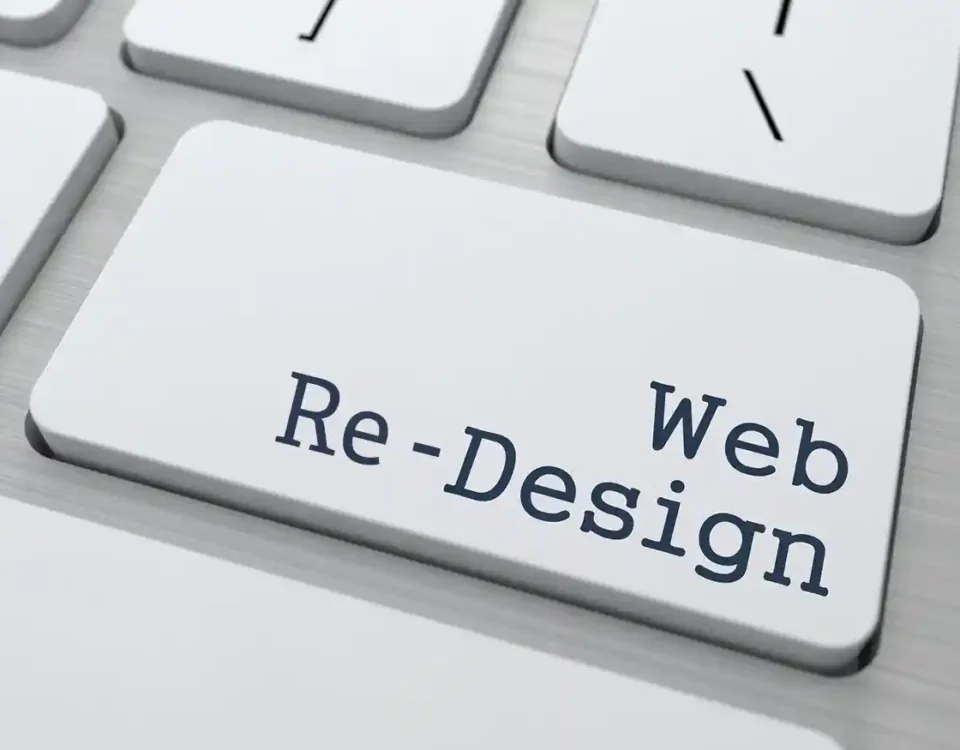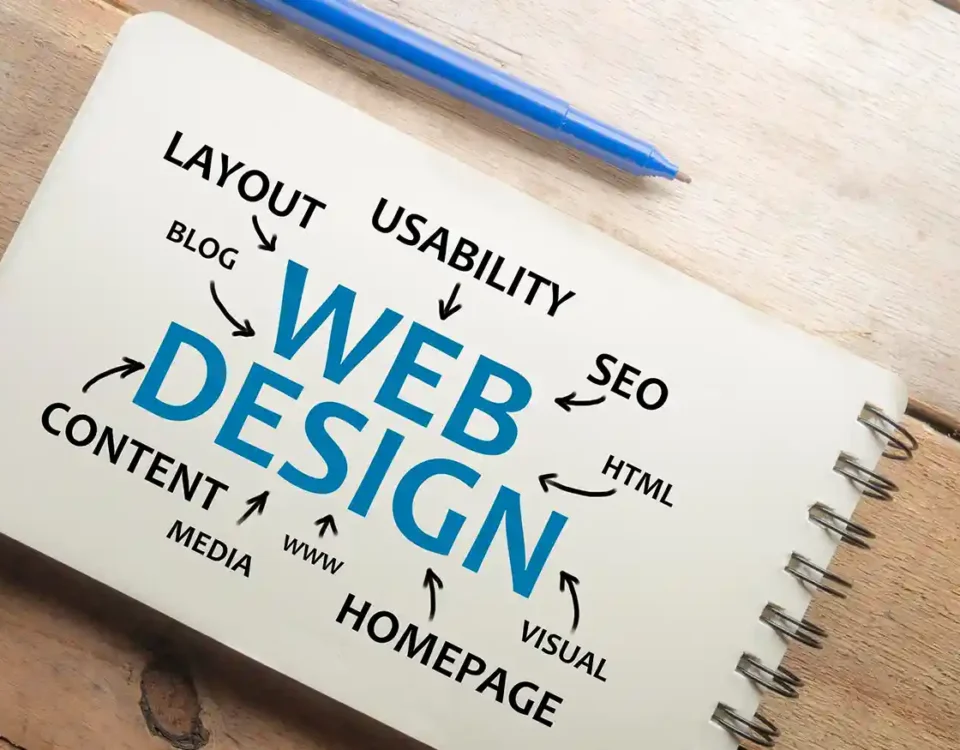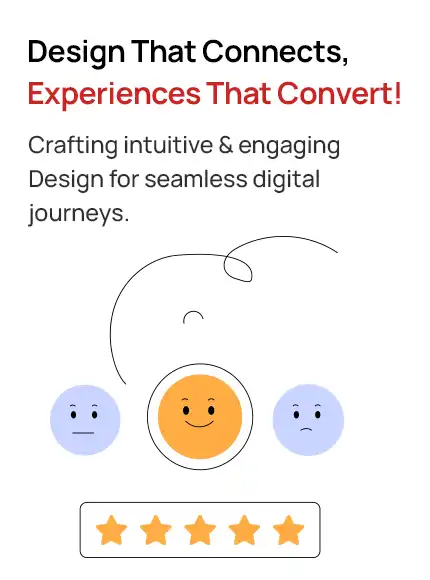
What Is Visual Identity And Branding In Design
July 7, 2025
Branding for Therapists: A Guide to Client Connection
July 11, 2025
What Is Visual Identity And Branding In Design
July 7, 2025
Branding for Therapists: A Guide to Client Connection
July 11, 2025The Ultimate Guide to Website Design for Manufacturing Companies
July 09, 2025
- 11 min to Read
Introduction
Did you know that over 94% of B2B buyers research online before making a purchasing decision? And that 48% of people say a company’s website is the top factor when judging its credibility?
In the manufacturing industry — where long-term contracts, technical accuracy, and operational trust matter — your website is often the first and most critical touchpoint.
Whether it’s a buyer looking for custom parts or a procurement manager verifying capabilities, visitors judge your business within seconds. And if your website feels outdated, hard to navigate, or unclear? They may never come back.
In today’s landscape, a manufacturing company’s website is far more than a digital brochure. It’s your sales tool, credibility builder, and 24/7 representative — all rolled into one.
This guide will walk you through how to design a website that reflects your expertise, builds trust with your audience, and helps convert visitors into real business opportunities — without the fluff, tech jargon, or marketing buzzwords.
Why Website Design Matters in Manufacturing
A lot of manufacturers still have old, hard-to-use websites. They’re slow, cluttered, and don’t reflect the real quality of work the company delivers.
But today’s buyers expect more. Even in B2B industries, people judge companies by how they appear online. A modern website shows that your company is professional, organized, and ready for serious work.
Here’s what a good website can do:
- Help people quickly understand what you offer
- Simplify the process for users to get in touch or request a quote.
- Show real photos, machines, teams, and capabilities
- Build trust with certifications, case studies, and customer stories
Great — here's the refined, informational, 100% unique, and SEO-ready version of the section “What Makes a Great Manufacturing Website?” It's designed for easy readability and ranking, with smooth transitions, clear subheadings, and no AI-like repetition or keyword stuffing.
What Makes a Great Manufacturing Website?
A high-performing manufacturing website doesn’t need flashy animations or trendy design tricks. What it needs is clarity, structure, and purpose. Your audience — engineers, purchasing heads, plant managers — values accurate information, easy navigation, and proof of reliability.
Let’s break down the must-have features that make a manufacturing website both functional and high-converting:
1. Straightforward Navigation
Good websites are easy to explore. In manufacturing, where services are often technical and layered, your navigation should be simple and self-explanatory. Visitors should be able to find what they’re looking for — whether it’s machining capabilities or safety certifications — in just a few clicks.
Suggested menu structure:
- Products or Services
- Capabilities
- Industries Served
- Certifications
- Contact Us
Keep your navigation bar clean, avoid hidden pages, and always include a search option if you offer a wide range of solutions. When people find information quickly, they’re more likely to trust and contact you.
2. A Homepage That Explains, Not Just Impresses
Your homepage is your company’s digital handshake. When someone lands on it, they should immediately know:
Suggested menu structure:
- What your company does
- What industries you work with
- How to reach you
- Why they should choose you over others
A short, clear headline like “Custom Metal Fabrication for Defense and Heavy Equipment Industries” is far more effective than a vague slogan. Support it with real images of your facility or production line, and include visible buttons like “Request a Quote” or “View Capabilities” to guide users further into your site.
3. In-Depth Product and Service Pages
These pages are where serious buyers make decisions. Instead of general claims like “we offer quality,” provide specific, helpful details that buyers can use.
Include:
- Technical specs (materials, tolerances, part sizes)
- List of equipment and technologies used
- Application examples (e.g., used in wind turbines or industrial automation)
- Certifications or standards met
- Photos or videos of the actual product in use
- A simple “Request a Quote” or “Ask an Expert” form
If applicable, offer downloadable files such as brochures or CAD models. Small touches like these go a long way in earning trust and turning visitors into customers.
4. An About Page That Tells Your Real Story
Don’t underestimate your About page — it’s often one of the most visited. Buyers want to know who they’re doing business with. Instead of generic corporate text, share your company’s real journey.
What to include:
- Year founded and key milestones
- Overview of your facilities or operations
- Industries you've served
- Introduction to leadership or key teams
- Core values, mission, and approach to safety or quality
Include real images, not stock photos. This builds credibility and humanizes your brand.
5. Proof That You Can Be Trusted
In manufacturing, buyers face real risk if they choose the wrong vendor. That’s why trust signals are essential. These are the elements that silently reassure your visitors they’re in the right place.
Add these throughout your website:
- ISO, AS9100, or other certifications (preferably with badges)
- Case studies with before-and-after results
- Client testimonials or success quotes
- Logos of industries or clients (where permitted)
- Associations, awards, or affiliations with industry bodies
When potential buyers see that others have trusted you — and that you meet quality standards — they’re more likely to start a conversation.
6. Optimized for Speed, Mobile, and Security
Functionality matters just as much as content. Even if your site looks great on desktop, many users will access it from a mobile device. Procurement teams, engineers, and executives are often multitasking — don’t make them wait.
Make sure your site is:
- Mobile-friendly – Clean layout, easy-to-tap buttons, fast loading
- Secure – HTTPS, privacy-friendly forms, and clear policies
- Fast – Compress images, use clean code, and keep plugins minimal
A fast, responsive website improves user experience — and also helps with Google rankings.
7 . Help People Take the Next Step
The main goal of your website is to turn visitors into leads.
To do that, you need:
- Quote request forms
- Contact buttons on every page
- Downloadable brochures or spec sheets
- Clear calls-to-action like “Talk to an Expert” or “Book a Call”
Make it easy for someone to reach out, no matter what page they’re on.
A great manufacturing website is one that informs, builds trust, and makes it easy for serious buyers to take action.
SEO Tips for Manufacturing Websites
To show up on Google, your website needs to follow some basic rules. Search engines prioritize content that is well-organized, easy to understand, and clearly related to what people are searching for. By following a few on-page SEO best practices, manufacturers can improve visibility and attract more qualified traffic over time.
- Use clear page titles like “Custom CNC Machining Services”
- Write short, helpful descriptions under each heading
- Add keywords naturally (don’t stuff them)
- Structure your content using the correct heading hierarchy — H1 for main titles, H2 for key sections, and H3 for subtopics.
- Add alt text to images for better accessibility
Final Thoughts: Build a Website That Reflects Your Manufacturing Excellence
For manufacturers, the buying process has shifted. Decision-makers now form opinions long before contact — often based on your website. A strong site should echo your company’s engineering mindset: structured, efficient, and built for performance.
A well-designed website should clearly communicate what you do, showcase your capabilities, and make it easy for visitors to take the next step — whether that’s requesting a quote, exploring services, or booking a consultation. If your current website lacks clarity, speed, or relevance, it may be time to rethink your digital approach.
At Upclues, we specialize in helping manufacturers create websites that support growth. From intuitive navigation to industry-specific content strategies, we focus on what really works in B2B and industrial spaces. Whether you're starting fresh or updating an existing site, our team ensures your online presence is aligned with your business goals.
If you're planning to invest in website design for manufacturing companies, we’re here to help you build a digital platform that’s not only functional but also future-ready.





